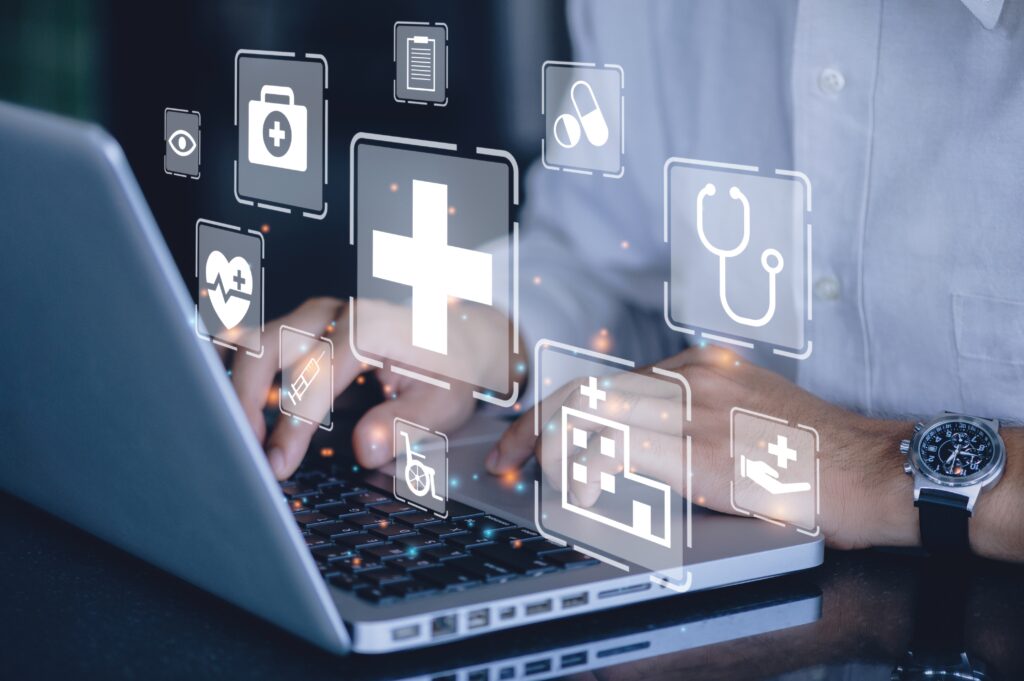Technology’s potential role in achieving more patient safety
While records systems have been associated with burnout and higher risk for medical errors, advanced computing is likely to enable better care and relieving clinician burden.

Technology is being hailed as both an accomplice to the causes of medical mistakes and a potential hero that can provide capabilities to prevent them.
Like any tool, information technology and digital health capabilities must be used in ways that optimize the benefits, while realizing that they also can harbor risks that must be mitigated.
Experts in patient safety note the risks and rewards of technology in healthcare, noting that potential benefits lie in future applications that could provide more insight to causes and prevention of medical errors.
Documentation burdens and burnout
Information technology used by clinicians – particularly those related to documentation and data collection – has been linked to increased workloads, challenging workflows, after-hours documentation and rising levels of burnout.
And the effects of burnout – resulting in clinicians’ sense of being overwhelmed or disinterested in work – has been closely linked to rising risks to patient safety. A study published by the National Academy of Medicine found that “burnout was an independent predictor of reporting a recent major medical error and being involved in a medical malpractice suit on multivariate analysis that is controlled for other personal and professional factors. The relationship between burnout and medical error is likely bidirectional.”
This awareness is growing, and many are hopeful that emerging technologies, analytics, artificial intelligence and more can both reduce workloads and provide insights into medical practice that could prevent medical errors from occurring.
Still, technology is increasing workloads for increasingly burdened clinicians, says Urmimala Sarkar, MD, professor of medicine at UCSF in the division of general internal medicine. “Technology has had a significant impact on (clinician) well being. There’s been a 400 to 500 percent increase in asynchronous messages from patients, and that’s been challenging. Downstream, technology is putting so much more information coming at healthcare teams that it creates a lot of work, and there are already too few people to do that work.”
The rising use of digital health technologies also represents a potential source for workload increase by overwhelming clinicians with exponentially more data, says Priyanka Shah, senior project engineer for the device evaluation group at ECRI. “It’s great to have hundreds or thousands of hours of data, but as healthcare relies on devices to identify trends or patterns, clinicians are inundated with data,” she says. “Now we’re overloading clinicians with so many more data points, with no tools to filter out the good from the bad. That could result in delays in diagnosing patients.”
A tool for efficiency
The technology effect has not all been negative in enabling better patient-clinician care. “Technology has had a positive effect in several ways. It provides more seamless monitoring and it can detect unsafe events between visits, like people having arrhythmias detected by Apple Watches,” Sarkar notes.
Within healthcare facilities, technology can best support patient safety by facilitating currently manual processes, contends Nicole Kerkenbush, chief nursing and performance officer at Monument Health, a Rapid City, SD-based healthcare system.
Her organization has been looking at using technology to take away mundane tasks, such as dictation to complete medical notes, but she envisions other advanced technology that enables remote monitoring to watch patients or artificial intelligence to anticipate potential patient issues.
AI can run behind the capture of data, and “we can let machine learning modules or algorithms … tell us what’s going on with a patient. Particularly one area we’re starting with is fall prevention. I’ve been in nursing over 30 years, and we still have not figured out how to keep patients from falling. I’ve got to believe that our computer systems can predict, perhaps (showing) when someone might be getting ready to fall.”
The use of vast quantities of data and cloud computing is opening up new possibilities for analytics and supporting clinicians in preventing medical errors, agrees Tim McDonald, MD, chief patient safety and risk officer at RLDatix, a technology provider.
“Pulling up your EHR data into the cloud – your event reporting data with your near misses and your culture data, down to the local unit level – we should be able to move forward with predictive analytics on things way beyond falls, but also medication errors and others like that,” he predicts. “So, from that big data standpoint, I think we're on the verge of something really special that hopefully would build in efficiencies.”
Technical issues still need to be addressed, especially as they relate to human-centered design, notes Jeff Salvon-Harman, a vice president at the Institute for Healthcare Improvement. “A lot of issues have arisen like alert fatigue,” he says. “We see a lot of human factor gaps in terms of design and alarms. We need a human-centered design lens – we really need to start thinking about the use of these devices, clinical care and patients, and marry all those together for optimal results. Right now, we just have cognitive overload.”
The future role for technology in advancing patient safety is really limitless, contends Kenneth Deans, president and CEO of Health Sciences South Carolina. Many advancements were in place before the pandemic, and now they can be deployed to provide current information on patients’ conditions and potential risk for negative incidents.
“This is where technology has played and will continue to play a pretty significant role,” Deans says. “And real-time information can only be synthesized by a machine. So I think all that feeds into what is to come, which all of that big data into an artificial intelligence and data analytics and predictive analytics model. And there are maybe other less exciting things that will also have an impact on patient safety in the future. We’ll see a continual advancement and make progress from here.”